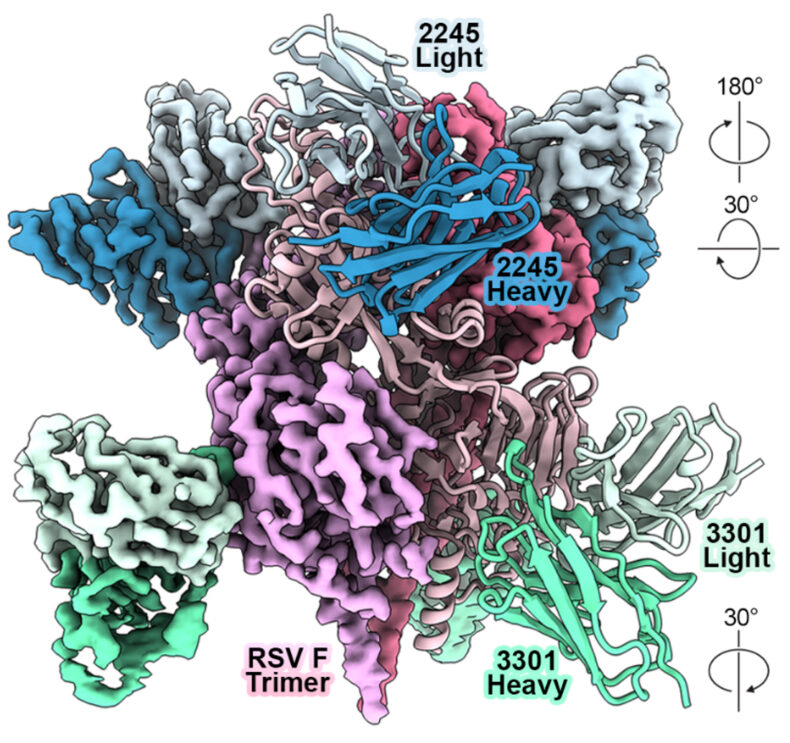Scientists from Vanderbilt University, the Universidad de la República in Uruguay, and other research centers have achieved a scientific tour de force — resurrecting a “dead antibody” to reveal the mysteries of cytochrome c, a versatile protein that is an essential part of the cell’s energy-generating capacity, and of life itself.
Cytochrome c is primarily confined to the inner membrane of the mitochondrion, the cell’s energy generator. When released to the inner-cellular fluid (cytosol), however, it plays a major role in apoptosis, the highly regulated, programmed death of cells that are no longer needed.

The protein also has been detected in secretory and bacterial vesicles, suggesting that it may be involved in other, as-yet-undiscovered functions. To date, however, alternate conformations of this protein — like the disguises of a quick-change artist—have eluded scientific scrutiny.
In 2009, using a unique monoclonal antibody, Uruguayan scientist Rafael Radi, MD, PhD, and collaborators at Universidad de la República, the University of Massachusetts Medical School, and University of Minnesota detected a new, tridimensional structure of cytochrome c in the cytosol and nuclei of non-apoptotic cells.
Unfortunately, the source of the antibody, a hybridoma originally created by Ronald Jemmerson, PhD, at the University of Minnesota, was lost when the liquid nitrogen tank storing it at sub-freezing temperatures failed.
Attempts to rebuild the hybridoma, a fusion of the antibody-producing immune cell with an immortal cancer cell, were unsuccessful.
A decade later, technological advances enabled Radi’s team in Montevideo, Uruguay’s capital, in collaboration with Vanderbilt colleagues and others, to determine the antibody’s full amino-acid sequence and rebuild it in the laboratory.
Reporting in the Proceedings of the National Academy of Sciences, the researchers demonstrated that their resurrected antibody detected alternative conformations of cytochrome c in living cells.
The biological role of these conformations may involve regulation of gene expression. More broadly, they concluded, this antibody “represents a unique tool encompassing knowledge of protein dynamics and plasticity.”
Radi, whose work has helped define the role that free radicals, oxidants and mitochondrial dysfunction play in human disease, is professor and chair of Biochemistry, Facultad de Medicina, Universidad de la República, and an International Member of the U.S. National Academy of Sciences.
He also is an adjunct member of the Vanderbilt University faculty in the Department of Biochemistry and Vanderbilt Institute for Chemical Biology.
Multiple researchers and core labs at Vanderbilt University and Vanderbilt University Medical Center were critical to achieving the resurrection. They included:
- Robert Carnahan, PhD, and associates in the Vanderbilt Antibody and Protein Resource, which designs, develops and produces high-quality monoclonal and polyclonal antibodies and recombinant proteins for research;
- Hayes McDonald, PhD, associate director of the Vanderbilt Mass Spectrometry (MS) Research Center Proteomics Core Laboratory, which provides state-of the-art instrumentation and strategies to analyze proteins and proteomes; and
- Paige Vinson, PhD, former director of Vanderbilt’s High Throughput Screening Facility, which aids the discovery of novel compounds for research and pharmacological development.
“This work illustrates the synergy of great science and collaborative spirit that exemplifies Vanderbilt core labs,” said Carnahan, associate director of the Vanderbilt Vaccine Center, who has advanced the use of human monoclonal antibodies to prevent life-threatening viral infections.
Radi met Carnahan during a visit to Vanderbilt in 2013, and the two discussed how to “resurrect” a lost antibody by generating a recombinant version of small amounts of the original antibody Radi had in his lab.
Carnahan followed up with an e-mail: “The VU Mass Sepctrometry facility core has never performed de novo antibody sequencing. They may be willing to give it a try.”
“That initial help was a key step toward reconstructing the primary sequences of the light and heavy antibody chains,” Radi said.
“In addition, the Vanderbilt group also cooperated in the bioinformatic analysis and the molecular biology and biochemistry that enabled the expression and purification of the recombinant antibody.”
Radi said he was grateful for all who participated directly in the project, and for the support of Lawrence Marnett, PhD, former dean of Basic Sciences in the Vanderbilt University School of Medicine.
“It was an incredible amount of work and took a long time, but I am very proud and excited of what was accomplished collaboratively,” Radi continued. “Vanderbilt played a central role in all of this.
“Now, with this unique tool in hand again for the community, it is likely that novel functions of cytochrome c in mammalian cell biology will be identified and revealed,” he said.

















